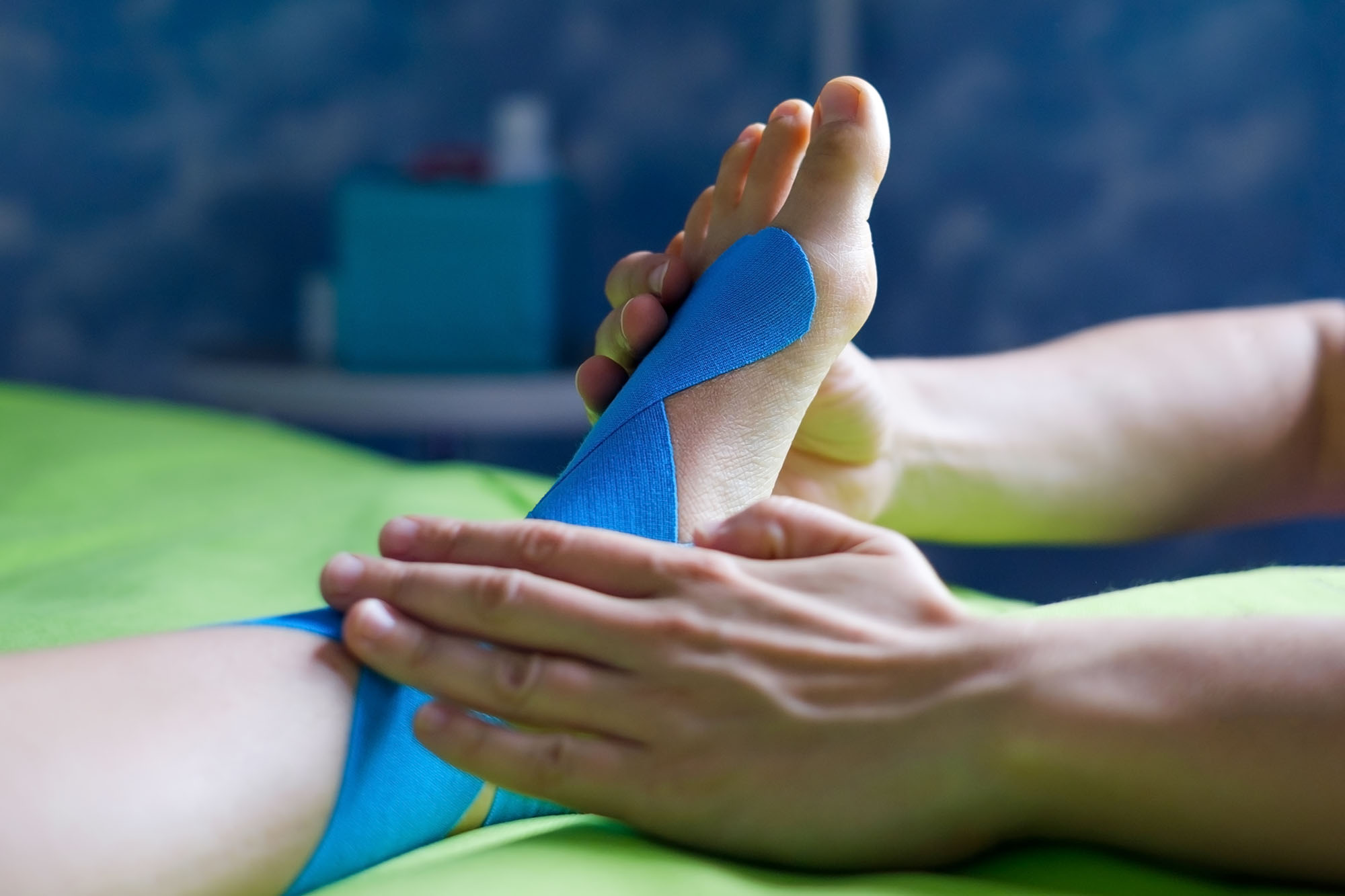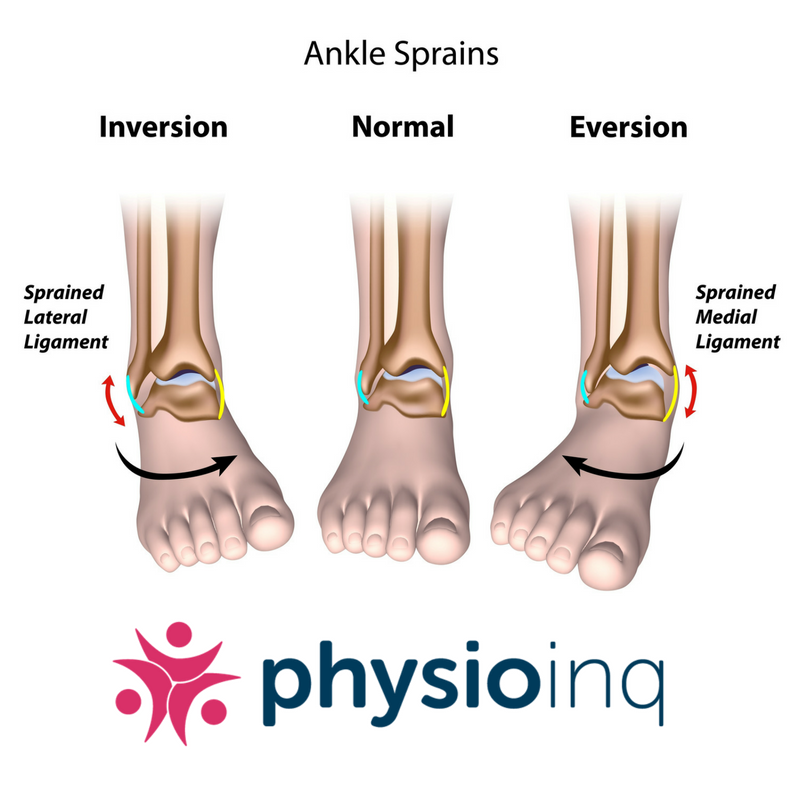
Ankle Strapping For Ankle Injuries
Tuesday, August 14, 2018
What is a sprain?
A sprain is a joint injury that affects the ligaments and / or capsule of a joint due to a forced movement, but without the articular surfaces losing their contact permanently. The bony ends that form the joint exceed its limit of physiological amplitude, that is, they flex or extend more than normal.
Ankle sprain
The ankle is a small joint, but it plays a fundamental role in the proper functioning of the leg and foot. The ankle works in a systematic way, with movements mainly in a plane. The joint is made up of a set of bones, which house the main bone of the ankle ( Astragalus or Talus ), the bone of the interior ( Medial Malleolus) and the exterior bone, the Fibula.
Ankle injuries are common, as they are permanently in motion, such as when we walk, run or stand. Sprains, in the case of the ankle, occurs in the joint that joins the bones of the tibia, fibula, and talus.

Cause of ankle sprain
The movements in and out of the foot do not occur in the ankle, but in the Subtalar joint . The muscle that pulls the foot inward (inversion) is slightly stronger than the muscles that pull the foot out (eversion). When a tension is exerted in the lateral part of the ankle, a tension in the external ligaments takes place, if this tension is serious, then the ankle sprain can be produced.
In other words, an ankle sprain is usually due to poor support after a jump, in a race or a direct trauma, the latter produced by an entrance to the ankle when the foot is supported. The ankle sprain is then produced as a result of a sudden movement of the foot, when the elastic resistance capacity of the ligament is exceeded. If the ligament that is injured is the external ligament, an inversion mechanism is produced, that is, the ankle is twisted, taking the sole of the foot inwards.
If the affected ligament is the internal one, the mechanism of injury is an eversion: the ankle is bent taking the sole of the foot outwards
As these ligaments are stretched, a critical point is reached, so it is difficult for the ligaments to regain their normal elastic function and a tear or rupture of the ligament occurs. Sprains can go from a minor degree, to those where the ligaments are completely broken and the ankle may be unstable.
Strapping
Ankle strapping can be used effectively to prevent and treat ankle injuries. It helps in the support and compression of the ankle after acute or chronic injuries and instability. It can also be used for cases of mild arthrosis of the foot or ankle. Its role as a preventive measure is to reduce the frequency and severity of an injury, particularly a sprained ankle. With strapping, injuries can be adequately prevented and the risk of it reduced.
Benefits of ankle taping
When applied correctly, ankle strapping can help in the following ways:
- It aids in the healing of ankle injuries
- It gives athletes an opportunity to return earlier to their sporting activities, following injury
- Ankle taping dramatically reduces the possibility of injury aggravation
- With proper ankle taping, ankle injuries can be prevented
Ankles should be taped in the following instances:
- As a result of specific ankle injuries: It is advisable to consider ankle taping, following certain ankle injuries like sprains, while performing activities that could aggravate the present condition (Discussions should be made with the physiotherapist, due to the fact that certain ankle injuries, like fractures, are not meant to be taped ).
- Prevention against injury: During activities like basketball, jogging, football, soccer, tennis etc, that put the ankle at risk of injury, ankle taping can do a whole lot of good.
Techniques for ankle taping
Note that everyone has their own way of doing ankle strapping, and this is one way it can be done:
- Step 1: First you need to get the angle of the patients foot in a nice, upward position. Use the tape to create an attachment loop at the top of the foot.
- Step 2: Start from the inside and come around the heel, come down under the foot, you come up, and then you place the tape down where it originally started; then cut.
- Step 3: It goes again on the opposite side. So again, start from the inside, go around the foot, around the heel, underneath the heel, wrap it around and tape down where you started; then cut.
- Step 4: This step is particularly to cover the foot up, more than anything else. Here you start from the attachment loop at the top of the foot and tape round on the ankle joint itself, to the other side, while forming a 'U' shape. Then cut.
- Step 5: Repeat step 4 from the opposite side.
- Step 6: Start from the inside, at the angle; take it around, and cross it up from underneath the heel to the top. Then cut
- Step 7: Repeat step 6 from the opposite side.
- Step 8: The last thing you do is to make it all neat and tidy. Go to the top of the foot, around the attachment loop and wrap once in a spiral form to further secure the taped area.
If you feel you need the professional help and guidance from a Physio Inq Physiotherapist don't hesitate to give us a call or book in for a session today.
